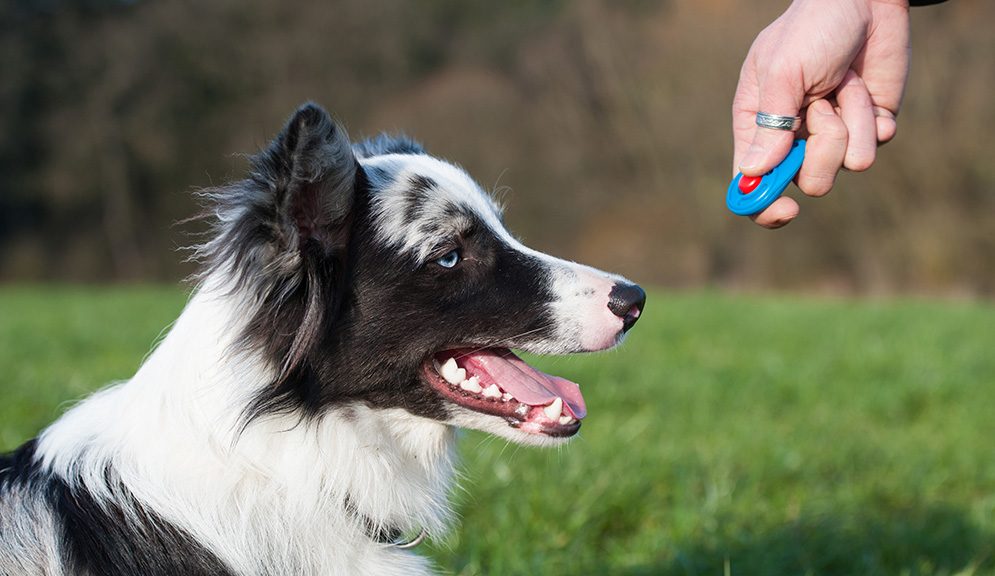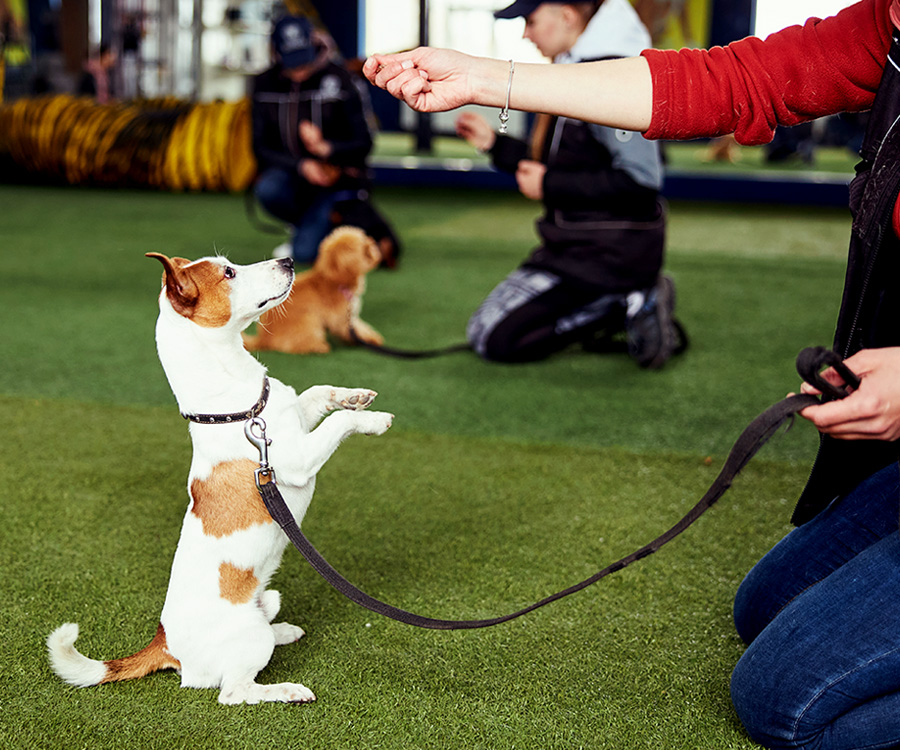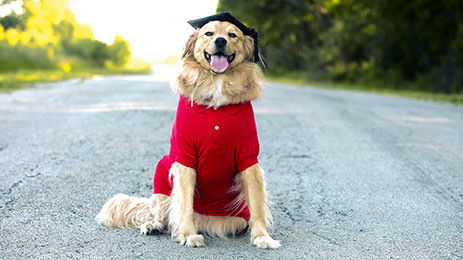Essential Tips for Successful Dog Training: A Guide for Pet Owners
Efficient pet training is a complex process that requires a tactical technique customized to both the pet's character and the proprietor's goals. Secret parts such as developing regular commands, employing favorable support, and facilitating early socialization play critical functions in promoting a well-adjusted canine buddy. Many pet dog proprietors encounter difficulties that can hinder progress, leading to aggravation and uncertainty. Understanding just how to browse these barriers can dramatically enhance the training experience, eventually transforming the partnership in between proprietor and dog. What are the crucial approaches that can be utilized to make certain success in this undertaking?
Recognizing Dog Behavior
Understanding pet dog behavior is essential for efficient training and promoting a harmonious partnership between dogs and their owners. Canines interact largely through body movement, vocalizations, and activities, making it vital for owners to translate these signals accurately. Acknowledging a dog's stance, tail setting, and ear alignment can provide understandings into its emotional state. As an example, a wagging tail does not constantly show joy; it can likewise signify excitement or stress and anxiety.

Socializing plays a significant role in dog behavior; exposure to various environments, people, and various other pets can significantly impact a canine's temperament. Aspects such as breed characteristics and specific character must lead training techniques, as some breeds might have details behavioral characteristics that necessitate customized strategies. By recognizing these components, owners can develop a helpful environment that urges favorable behavior, bring about successful training outcomes and a much deeper bond with their pets.
Developing Consistent Commands
Reliable communication with your canine begins with developing consistent commands. This fundamental element of training is critical for cultivating understanding in between you and your pet. Uniformity in the commands you make use of makes sure that your canine can reliably connect details words or phrases with the wanted actions.
When choosing commands, choose clear, unique words that are very easy to state and set apart from each other. Stay clear of using similar-sounding commands that might confuse your pet. For example, utilizing "rest" and "stay" is suitable, but "sit" and "struck" can result in misconceptions.
Additionally, keep the same tone and volume for each and every command. Pet dogs are delicate to singing cues, so varying your tone can produce complication.
It is just as vital to make certain that all relative get on the same web page pertaining to the commands utilized. A united front in command usage will stop mixed signals and reinforce the learning procedure.
Positive Reinforcement Techniques
The power of favorable support in canine training hinges on its capacity to urge desired actions with rewards and appreciation. This strategy is grounded in the principle that behaviors adhered to by positive results are a lot more most likely to be repeated. By incorporating favorable support into your training routine, you can successfully shape your pet's actions in a positive manner.
To apply positive support, it's necessary to identify what encourages your canine, whether it be deals with, toys, or spoken appreciation. When Bonuses your pet carries out a wanted action, such as resting on command, instantly award them with a reward or love. This organization between the command and the favorable end result enhances their understanding.
It's crucial to timing the benefits appropriately; delivering the support within secs of the desired habits aids your dog make the connection (dog training). Additionally, consistency is key-- make sure that all member of the family utilize the exact same commands and reward systems to prevent complication

Slowly, you can minimize the regularity of treats as your dog discovers the actions, transitioning to commend or intermittent rewards. This technique not only cultivates a solid bond between you and your canine however also promotes a favorable my sources understanding environment, making training an enjoyable experience for both.
Socialization and Communication
Continually exposing your dog to a range of environments, people, and other animals is essential for their social advancement. Socializing ought to begin early, ideally during the crucial window of 3 to 14 weeks, when young puppies are most responsive to brand-new experiences. Nonetheless, older pets can additionally take advantage of ongoing socialization efforts.
Present your pet dog to different settings, such as parks, pet-friendly stores, and metropolitan areas. This exposure helps them adjust to numerous stimuli, reducing anxiousness and concern actions. Motivate positive communications with other pets and individuals, making certain that these experiences are regulated and secure to cultivate self-confidence.
Use structured playdates with well-mannered pets, as this can improve your pet's social abilities and teach them ideal habits. Obedience courses and training sessions likewise offer outstanding opportunities for socializing, allowing your pet dog to interact with others in a monitored atmosphere.
Monitor your pet dog's body language during interactions, as this will aid you assess their convenience level. Progressively enhance exposure to even more difficult scenarios while guaranteeing that each experience declares. A well-socialized pet dog is most likely to show balanced habits, making them a joy to have in any type of setting.
Addressing Typical Training Obstacles
Every canine owner will certainly run into training difficulties eventually, despite their canine's age or socialization level. Identifying usual concerns such as stubbornness, diversions, and terror can aid in establishing reliable strategies for enhancement.

Gradually introduce distractions as the dog becomes much more efficient in commands. Short, constant training sessions are additionally efficient in preserving interest.
Fearfulness can hinder a dog's knowing process. Steady desensitization to the resource of the original source anxiety, coupled with positive support, can aid alleviate anxiousness. Persistence is vital; never force a pet right into a circumstance that triggers distress, as this may exacerbate the issue.
Inevitably, understanding and resolving these typical difficulties with an organized strategy will foster an extra efficient training experience, enhancing the bond between pet and proprietor while promoting reliable discovering.
Conclusion
In recap, effective canine training counts on a detailed understanding of canine behavior, the facility of constant commands, and the application of favorable support methods. Socializing plays a critical function in developing well-adjusted animals, while dealing with typical training obstacles needs perseverance and versatility. By carrying out these vital methods, family pet owners can promote a solid bond with their canines and promote desirable habits, inevitably causing a harmonious connection between people and their canine friends.
Comprehending dog behavior is crucial for reliable training and cultivating a harmonious connection in between canines and their owners.Socializing plays a substantial role in canine habits; direct exposure to different settings, individuals, and various other animals can substantially affect a dog's temperament.The power of positive reinforcement in pet dog training exists in its capacity to motivate wanted actions through rewards and praise. By incorporating positive support into your training regimen, you can efficiently form your pet dog's actions in a positive manner.
In summary, successful dog training relies on an extensive understanding of canine habits, the establishment of constant commands, and the application of favorable support methods.
Comments on “The Advantages of Early Dog Training for a Well-Behaved Pet”